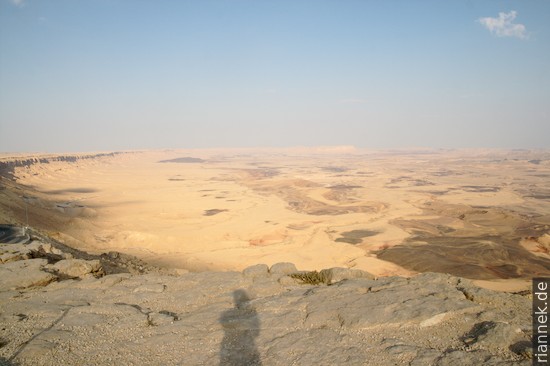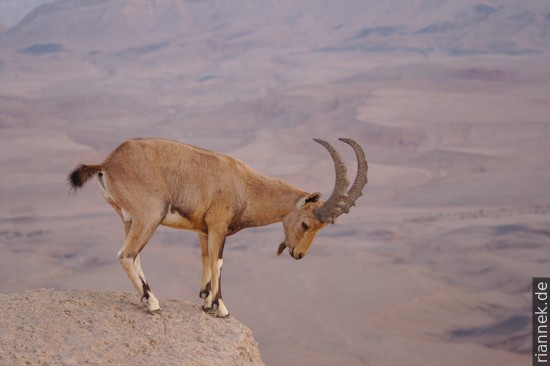
A great view, I sit at the “crater rim” on the hard limestone, let my legs dangle and look 300 m down on a landscape coloured red, black, yellow and white…
The rumour that the Ramon “crater” in the Negev Desert was formed by a meteorite impact persists. Rather, it is an erosion crater. It is not quite round either, 40 by 8 km, nothing more than a strangely shaped canyon.
The hard limestone roof of an anticline broke open here, and the soft sediments in the fold core were eroded away as a result (especially after the formation of the Jordan Rift Valley in the east). The sediments exposed down there are mainly Jurassic and, at the southern margin, Triassic. Besides some limestone and mudstone, there are mainly sandstones, the sand having been brought by rivers from the granites of the Sinai. There is also gypsum, smaller magmatic intrusions (e.g. a laccolith intruded into the gypsum layers) and also a few small volcanoes (cinder cones) from the Cretaceous that have been exposed again.
In one rock face I see large ammonites, in another place the sandstone has been heated so much that it crumbles into arm-thick columns, almost like basalt columns. Lots to see for geologists…

Read on
Backpacking trip Middle East and Caucasus 2008
The Formation of Mountains
Dead Sea and Madaba
Jerusalem
Hebron and Bethlehem
Masada
Sinai